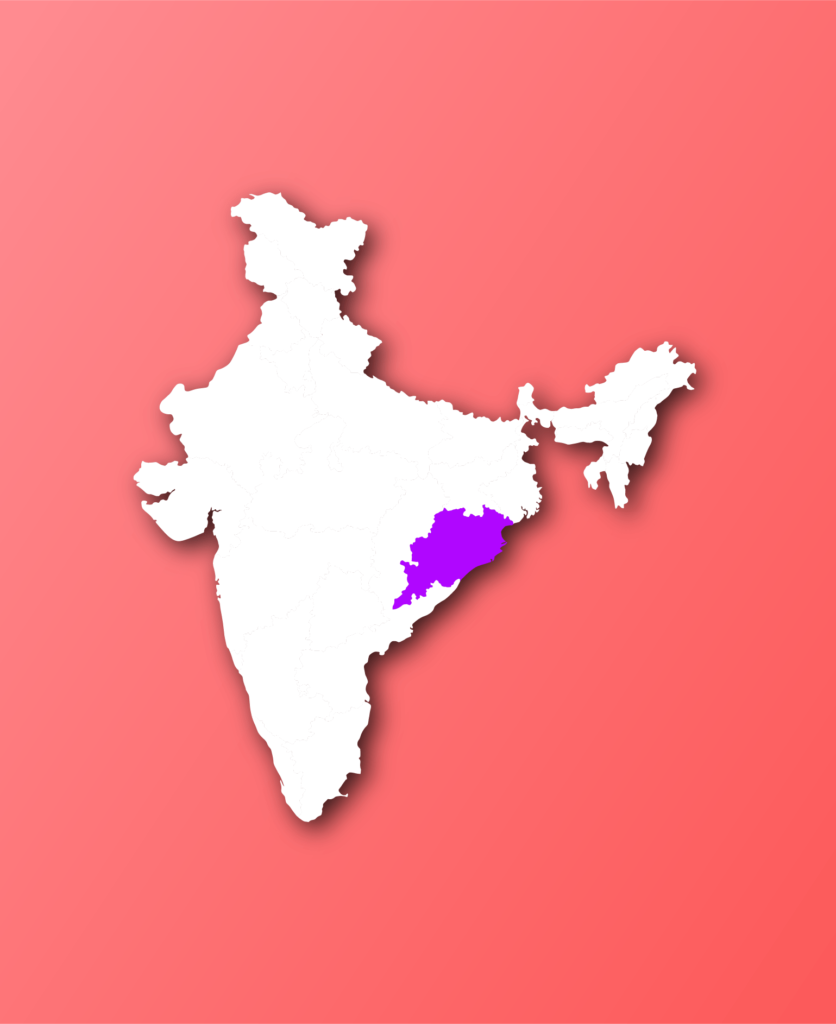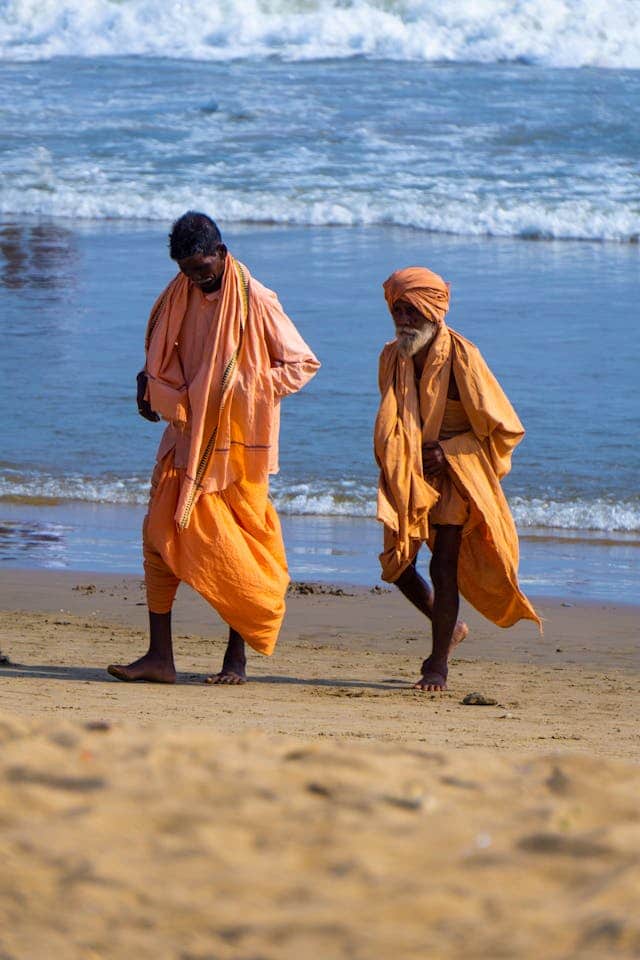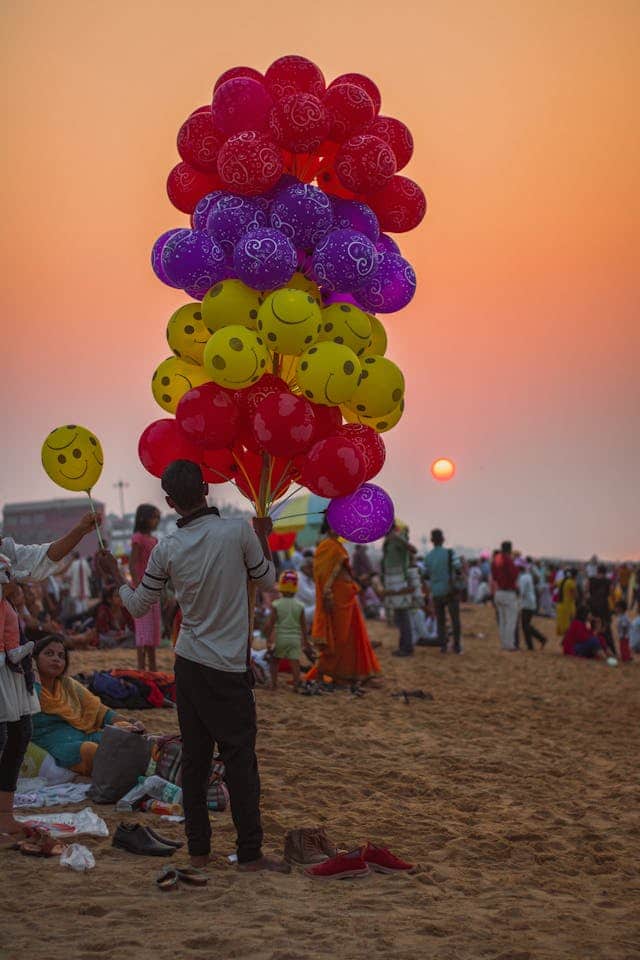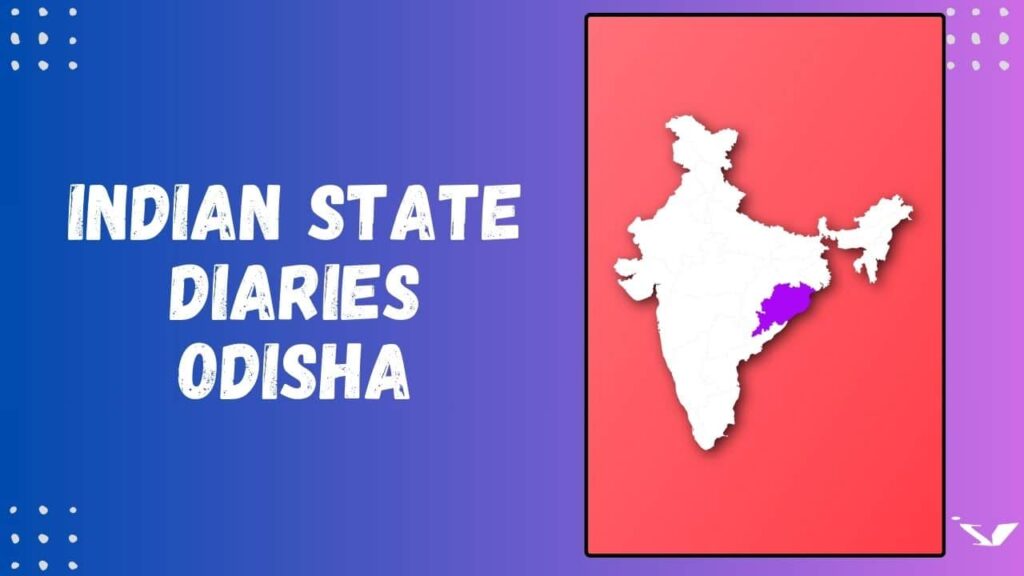Introduction – Odisha

Odisha, previously called Orissa, is a state located in eastern India, renowned for its rich history, vibrant culture, and natural beauty. Nestled on the eastern coast, Odisha is bordered by the Bay of Bengal to the east and shares its boundaries with West Bengal, Jharkhand, Chhattisgarh, and Andhra Pradesh. Known for its vibrant festivals, ancient temples, and scenic landscapes, this state plays a significant role in India’s cultural and historical tapestry.
Geography
Located between 17.7805° N latitude and 83.2131° E longitude, Odisha spans an area of approximately 155,707 square kilometers. The state experiences a tropical climate, characterized by high humidity and significant rainfall during the monsoon season from June to September. Winters are mild and pleasant, making it an ideal time for tourism.
Historical Significance
Odisha boasts a rich historical legacy that dates back to ancient times. The state was once the epicenter of the powerful Kalinga kingdom, which played a crucial role in Indian history. The Kalinga War, fought between Emperor Ashoka of the Maurya Dynasty and the Kalinga kingdom, is a landmark event that led to Ashoka’s transformation into a promoter of Buddhism. During the medieval period, Odisha witnessed the rise and fall of several dynasties, including the Eastern Ganga and the Gajapati rulers, who contributed significantly to the region’s architectural and cultural heritage. In modern history, Odisha became a separate state on April 1, 1936, and has since made remarkable progress in various sectors.
Culture and Tradition

Odisha is a land of diverse cultural traditions and vibrant festivals. The state celebrates numerous festivals with great enthusiasm, the most notable being Durga Puja, Diwali, and Rath Yatra. Traditional clothing in Odisha includes sarees for women and dhotis for men, with the famous Sambalpuri saree being a symbol of elegance and craftsmanship. The cuisine of Odisha is equally diverse, featuring dishes like Pakhala Bhata, Dalma, and Chhena Poda, which reflect the state’s rich culinary heritage.
Tourist Attractions

Bhubaneswar: The Temple City
Bhubaneswar, the capital city of Odisha, is known for its magnificent temples. The Lingaraj Temple, dedicated to Lord Shiva, is a stunning example of Kalinga architecture and attracts thousands of devotees and tourists each year.
Puri: The Holy City

Puri is famous for the Jagannath Temple and its annual Rath Yatra, a grand chariot festival that draws millions of pilgrims from around the world. The city’s pristine beaches are also a major attraction.
Konark: The Sun Temple

The Sun Temple in Konark, a UNESCO World Heritage Site, is an architectural marvel and a testament to Odisha’s rich heritage. Built in the 13th century, this temple is designed in the shape of a colossal chariot with intricately carved stone wheels, pillars, and walls.
Chilika Lake: The Largest Coastal Lagoon
Chilika Lake, the largest brackish water lagoon in Asia, is a paradise for bird watchers and nature lovers. The lake is home to a variety of migratory birds, especially during the winter months.
Simlipal National Park
Simlipal National Park, a biosphere reserve, offers a unique blend of flora and fauna. The park is known for its population of Bengal tigers, elephants, and other wildlife species, making it a perfect destination for nature lovers.
Arts and Crafts
Odisha’s arts and crafts are renowned for their intricate designs and craftsmanship.
Pattachitra
Pattachitra, a traditional scroll painting technique, depicts mythological narratives and folklore with vivid colors and fine detailing.
Silver Filigree Work
Silver filigree work, known as Tarakasi, involves creating delicate jewelry and decorative items from fine silver wires, showcasing the artisans’ skill and precision.
Appliqué Work
Appliqué work from Pipili involves stitching colorful fabrics onto a base material to create decorative patterns, commonly seen in umbrellas, canopies, and wall hangings.
Economy and Industry
Odisha’s economy is primarily based on agriculture, mining, and handicrafts.
Agriculture
The state is a major producer of rice, pulses, oilseeds, and spices. The fertile plains of the Mahanadi River contribute significantly to the agricultural output.
Handicrafts and Textiles
Handicrafts and textiles, such as handloom sarees and silver filigree work, contribute to both the economy and the cultural identity of Odisha.
Educational Institutions
Odisha is home to several prominent educational institutions.
Prominent Universities and Colleges
Notable universities include Utkal University, Odisha University of Agriculture and Technology (OUAT), and Indian Institute of Technology (IIT) Bhubaneswar.
Research Institutions
Research institutions like the Institute of Minerals and Materials Technology (IMMT) and the Regional Medical Research Centre (RMRC) contribute to scientific advancements and innovation.
Languages Spoken
The official language of Odisha is Odia, a classical language with a rich literary tradition. Other regional languages and dialects, such as Sambalpuri, Kui, and Ho, are also spoken across the state.
Music and Dance
Odissi Dance
Odissi, one of the oldest classical dance forms in India, originated in Odisha. It is characterized by its grace, fluid movements, and expressive gestures.
Folk Music
Folk music in Odisha is an integral part of its cultural fabric, with traditional instruments like the dhol, mridanga, and jhanja adding rhythm and melody to local celebrations.
Wildlife and Natural Beauty
Odisha’s natural beauty is evident in its diverse wildlife and scenic landscapes.
Wildlife Sanctuaries
Sanctuaries like the Nandankanan Zoological Park and Bhitarkanika National Park are home to a variety of wildlife species, including white tigers, saltwater crocodiles, and numerous bird species.
Scenic Landscapes
From the serene beaches of Puri to the lush green hills of Daringbadi, Odisha offers a plethora of picturesque locations that captivate tourists and nature lovers alike.
Infrastructure Development
Odisha has made significant strides in infrastructure development.
Transport and Connectivity
The state boasts a well-developed network of roads, railways, and airports, ensuring seamless connectivity within and beyond its borders.
Urban Development
Urban development initiatives in cities like Bhubaneswar, Cuttack, and Rourkela have transformed them into modern urban centers with improved amenities and quality of life.
Challenges and Issues
Despite its progress, Odisha faces several challenges.
Environmental Concerns
Deforestation, industrial pollution, and climate change pose significant threats to the state’s environment and biodiversity.
Socio-Economic Issues
Poverty, unemployment, and education disparities are pressing socio-economic issues that the state continues to address through various initiatives and programs.
Government and Administration
Odisha’s governance structure is robust, with a focus on development and welfare.
State Government Structure
The state government, headed by the Chief Minister, is responsible for legislative and executive functions, with departments focusing on various sectors like health, education, and infrastructure.
Key Political Figures
Prominent political figures in Odisha include the Chief Minister and members of the legislative assembly, who play crucial roles in policy-making and governance.
Conclusion
Odisha is a land of immense historical significance, cultural richness, and natural beauty. Its diverse attractions, from ancient temples to scenic landscapes, make it a captivating destination for tourists. With ongoing development and efforts to address challenges, Odisha’s future prospects look promising, ensuring that it remains an integral part of India’s heritage and progress.
Picture credits: https://www.pexels.com/ ; https://pixabay.com/
Like this post?
Give a glance to other posts from Indyviews : https://indyviews.in/blogsy/
